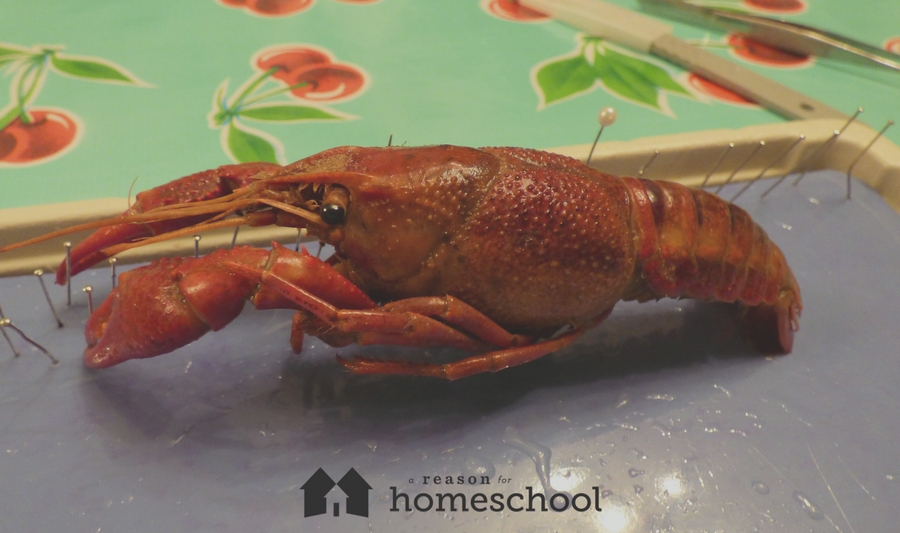Whether you call them crawdaddies like I do, or perhaps the more proper crayfish, the little crustaceans are fascinating. Denizens of nearly every water hole in these parts, they are some of the first water creatures I can remember catching.
Crawdaddies use a sharp flip of their tail to swim backwards, evading hands until you have discovered the trick of distracting the creature with a hand before it’s eyes while the other hand creeps up to grab it from behind. Here I am going to take you through an examination of the crustacean’s exterior, and then we will see the wonder of what’s inside.
You can purchase large-sized specimens at many science websites. Home Science Tools is a favorite of mine, while Nasco has a much larger selection of dissection supplies, just in case this one makes you excited to try more!
Before I ever did a dissection and found my fascination with the way that God put things together, I was still enamored with animals and how they are made. The jointed tail and tons of tiny legs (called swimmerets) beneath the larger outer legs of a crawdad never failed to delight me. There were many times when I would find a female with eggs attached to her swimmerets, her tail protectively folded up to cover her babies.
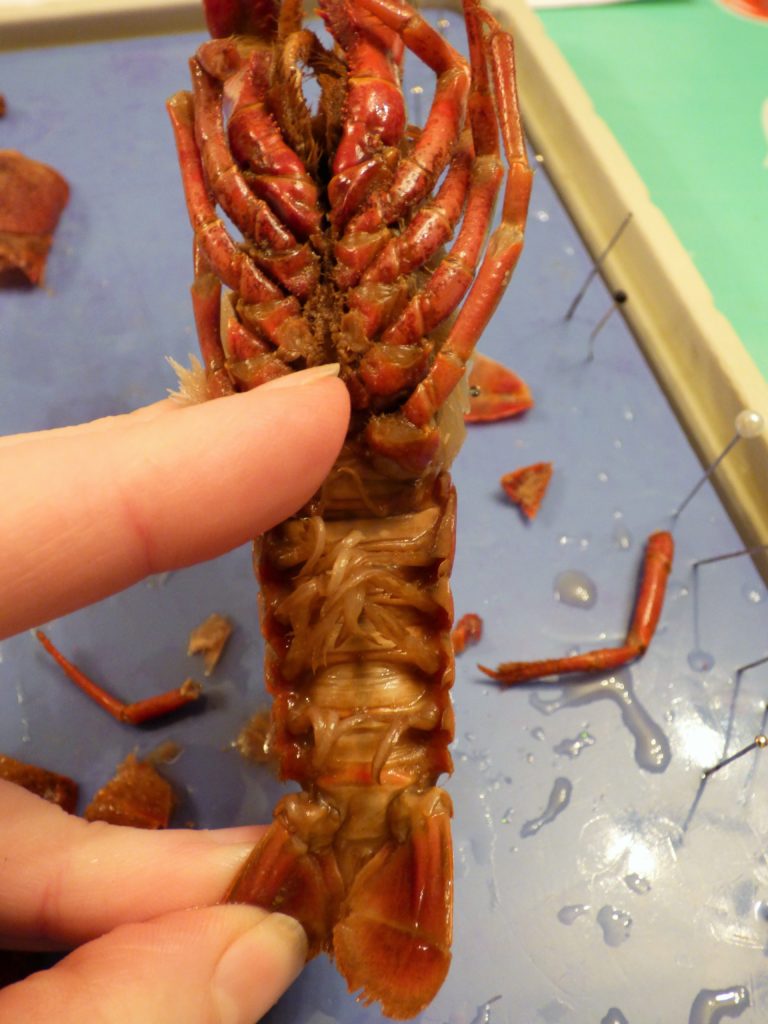
If you look at a crawdad’s mouth parts there are more small “legs” around it. It uses all of these to fan water and particles into its mouth, much like a lobster or shrimp. Crawdaddies are detritus feeders, meaning they eat a lot of dead, rotted things like leaves. They will also eat small worms and insects if they get the chance.
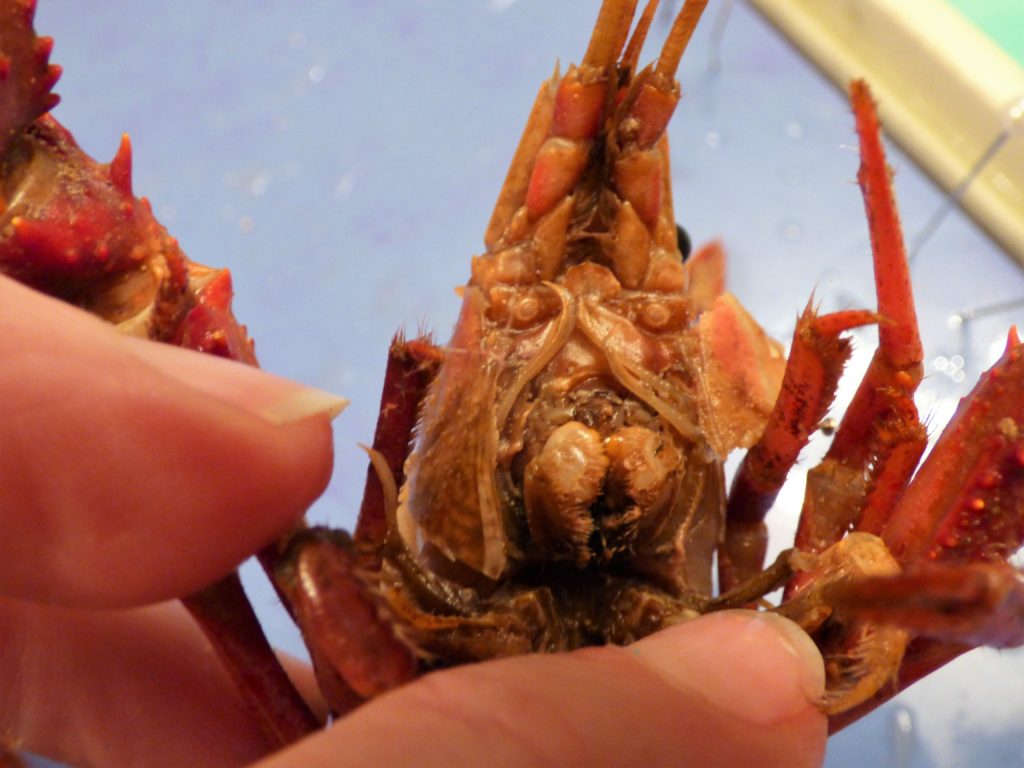
Look at the large antennae and the lesser ones. These are like the whiskers on a cat, helping the crawdad sense its surroundings. At the base the of large antenna is a pit with a small grain of sand called a statocyst. It rolls about in the pocket, which is filled with sensitive hairs, and gives a sense of balance similar to the fluid in human ear canals. (Have a child hold a marble in their palm and feel how it rolls during movement to show how this works.)
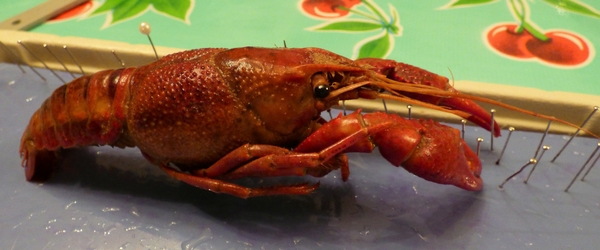
If you gently squeeze a crayfish on its body, you will feel that its body armor is strong, yet flexible. This is his exoskeleton. While we have our skeleton on the inside, he has his on the outside for protection and to support his inner organs. North American Indians discovered long ago that the chitin that helps make up the shell was antibacterial and, when ground into a plaster, served as a good wound cover.
A squeeze on the claws will show that the chitin is thicker and stronger there. The claws serve as protection, to seize food items, and to fight with other crayfish. If a claw or leg is lost, the creature can regenerate (essentially, re-grow) the appendage, much like a skink regrowing its tail.
Now that you have admired the outside of your crawdad, we are going to use some small scissors to begin a cut up from the chest area, behind the eyes, and down the other side.
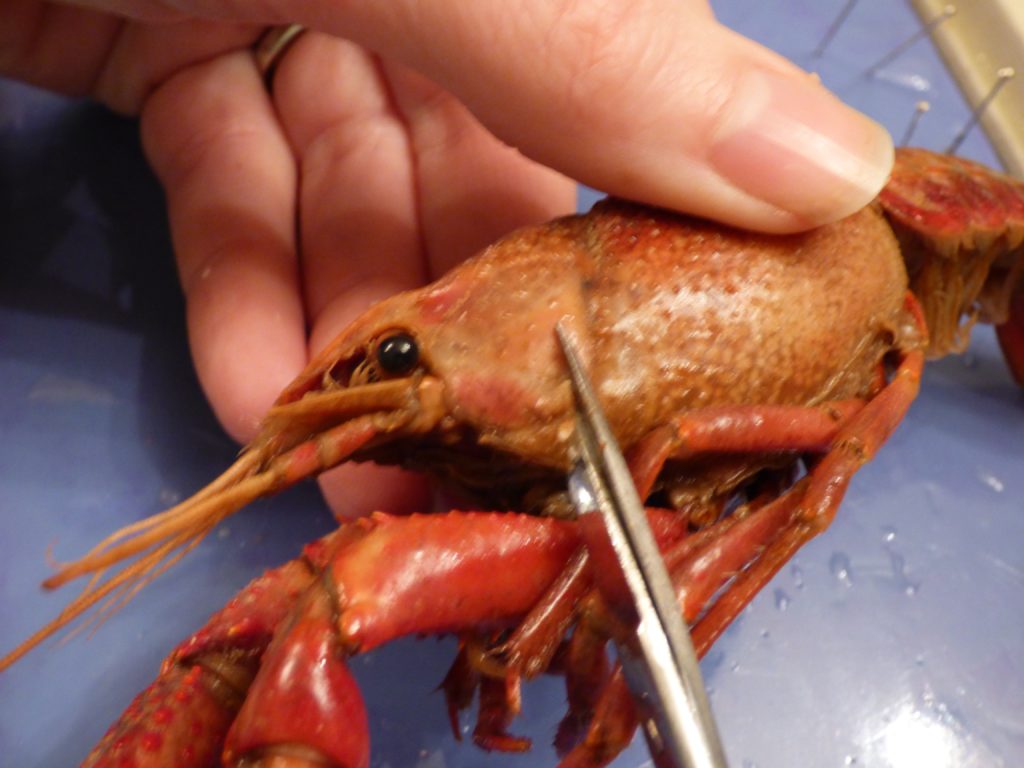
Now make a cut from between the eyes and down the center of the body, partway down the segmented tail. The side plates are very lightly attached, so you should be able to gently pull it up from the bottom near the legs, and take off each side separately.
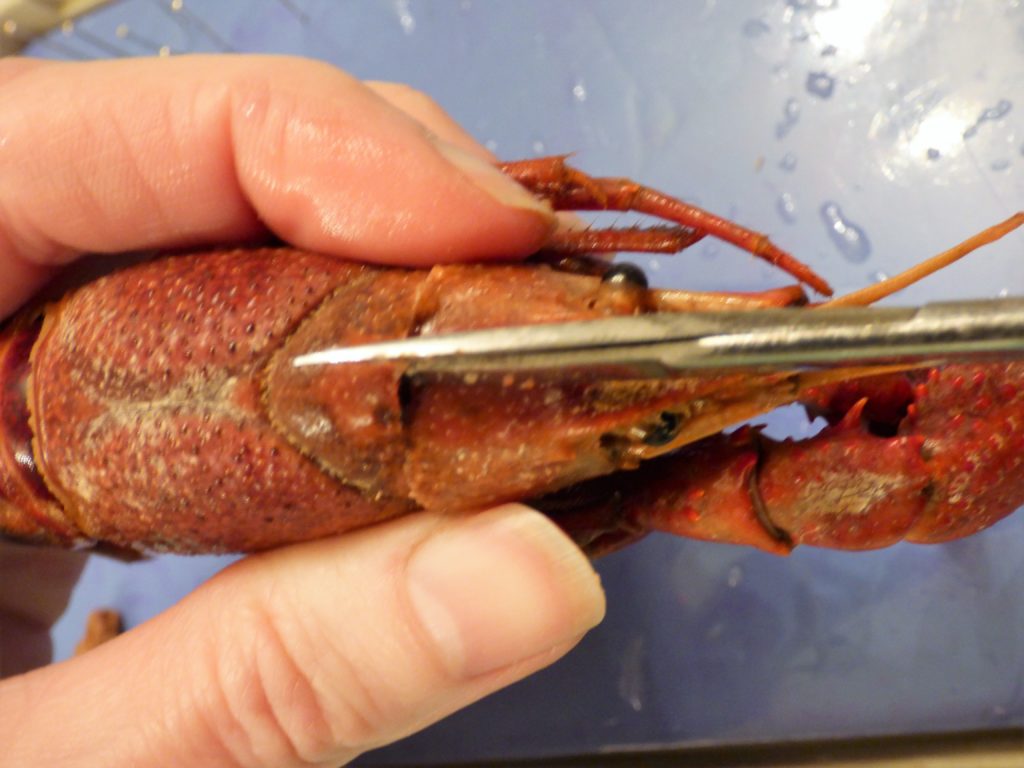
Now make a cut from between the eyes and down the center of the body, partway down the segmented tail. The side plates are very lightly attached, so you should be able to gently pull it up from the bottom near the legs, and take off each side separately.
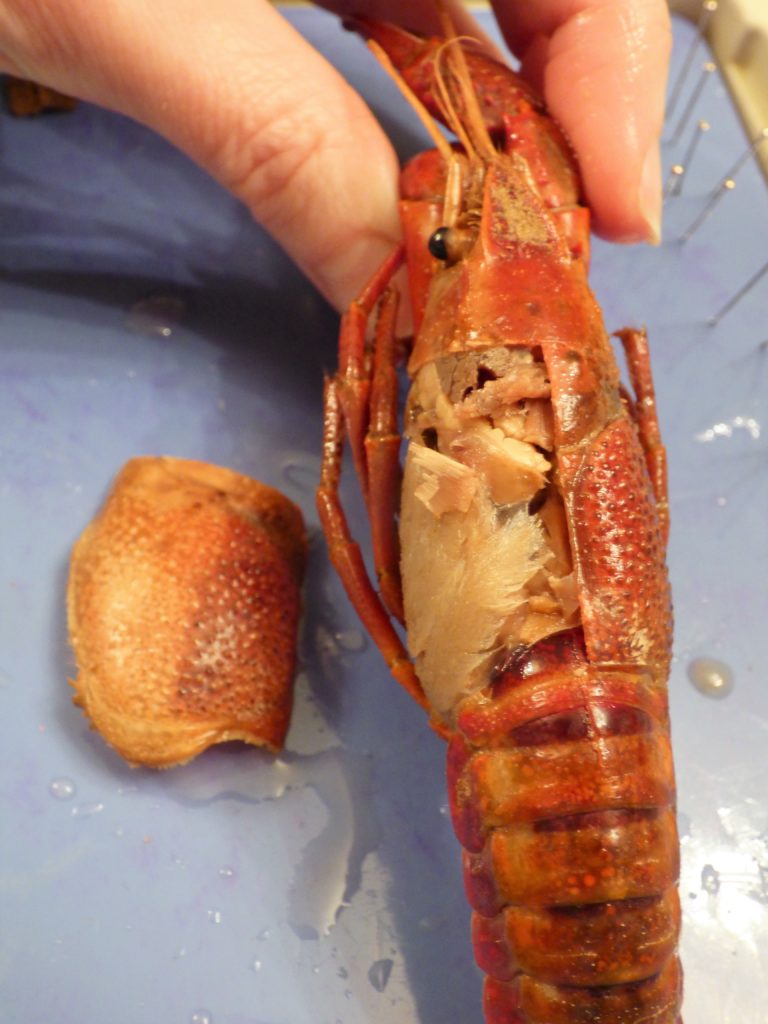
The first thing you will see as you lift the side are the gills. Please note that the legs attach right below these gills. As the crawdad moves, the legs help to pump the gills almost like bellows for a fire, pushing water through so the gills can extract oxygen.
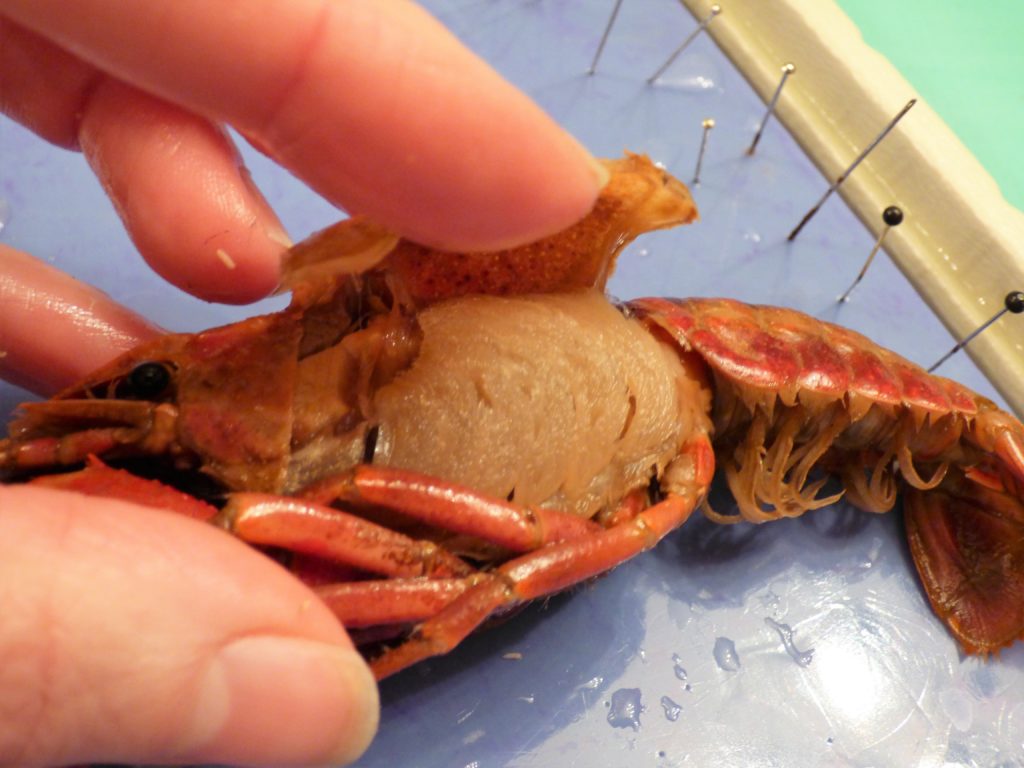
When you have both sides off, you will see an array of organs. Directly behind the head is the stomach (marked in red); behind this and to either side are long, pale digestive glands (green dots). The small cloven shaped organ that seems suspended beneath is the heart (purple). Below are a pair of whiteish gonads (blue). Extending beyond this to the end of the tail is the intestine, a thin dark vein (orange), carrying digested food to the anus.
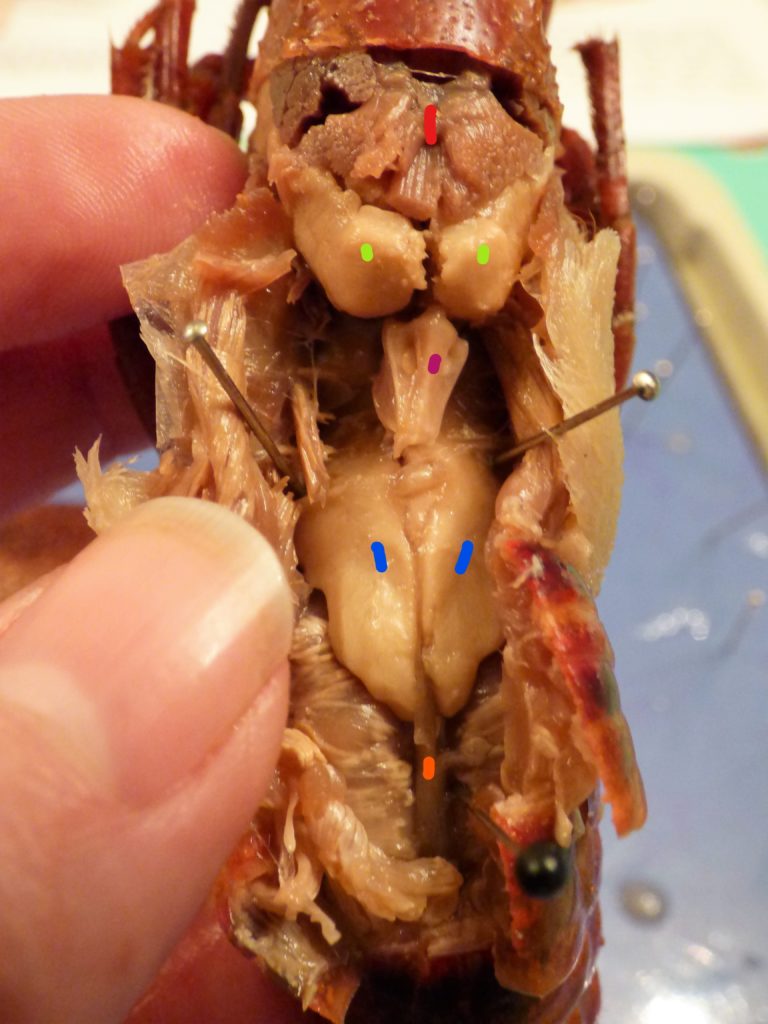
This creature is amazing in that it has a heart (circled below in red) but it is combined with an open circulatory system. This means it is not limited to blood vessels as means of transportation. The blood simply bathes the organs and cells, draining by gravity into the lower shell area called the sternal sinus. There the blood is pumped through the gills to be oxygenated and then drawn back back up to the heart for the process to being again. You could quite literally say that a crawdaddy has internal bleeding every moment of its life!
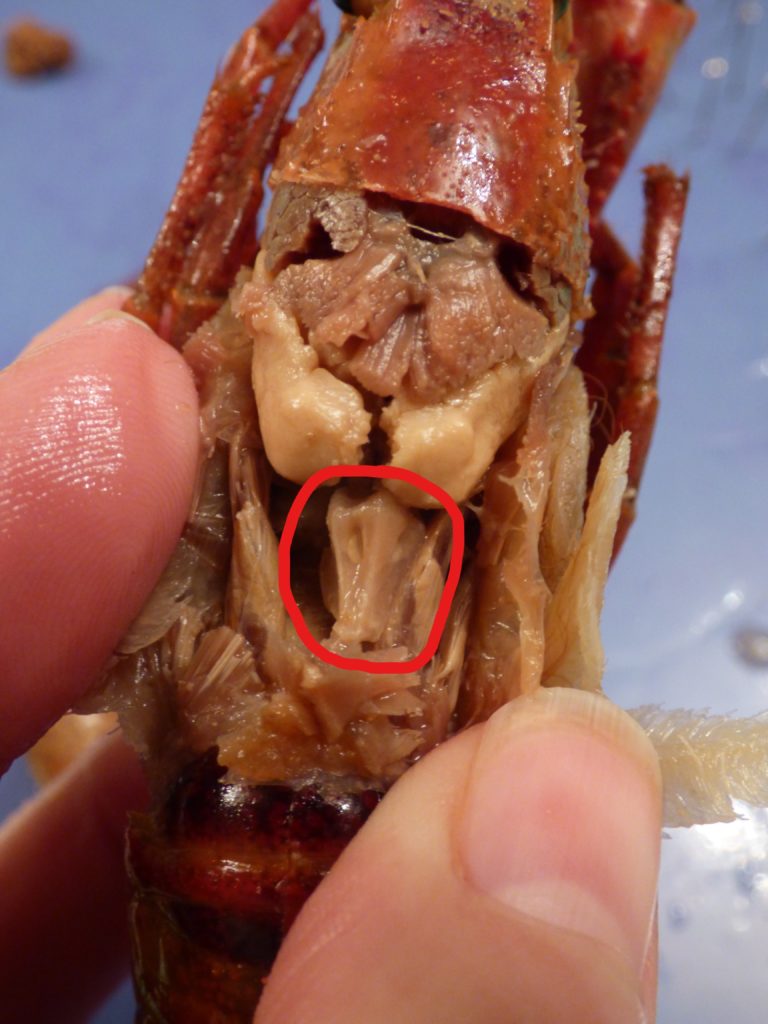
If you want to cut the sides off of the head plate, you will find a small organ on each side called the green gland (red arrow). These function like kidneys and help to purify the blood. On a crawdad that had not been preserved, these will be hard and white and look like half a pearl.
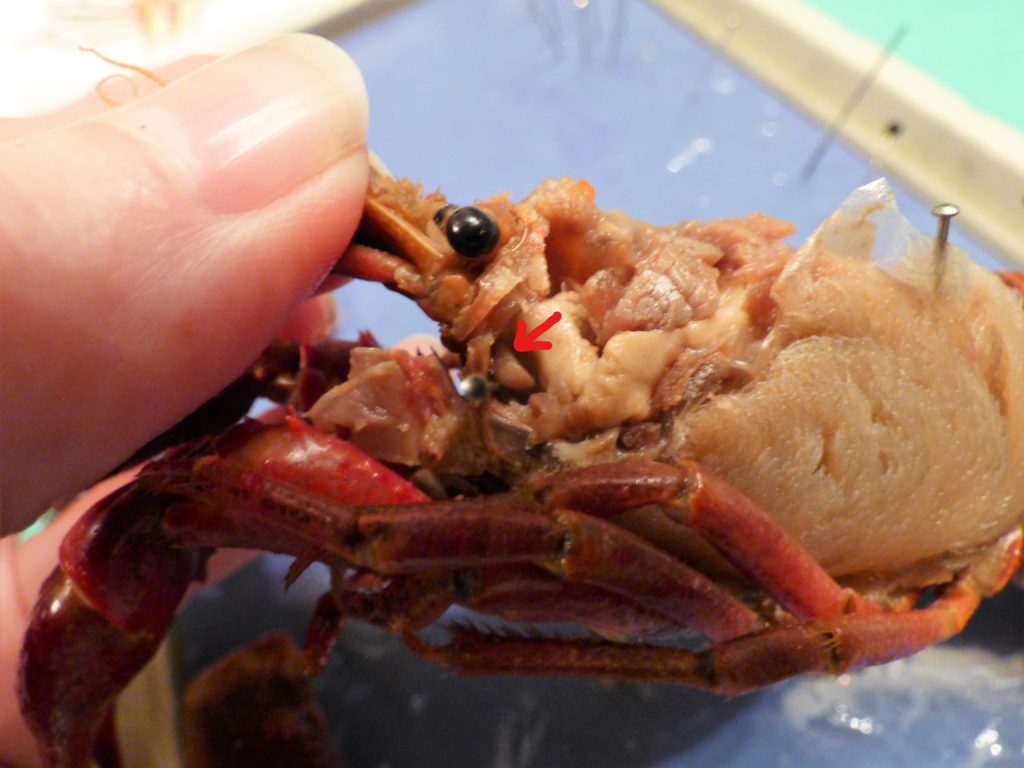
This is a very simple examination of an amazing creature, both outside and inside. We hope it can help your children, and you, come to better understand how intricately and perfectly God made even the most humble of his creations!
Read up on crayfish with your children and you are bound to find all sorts of fascinating facts you never knew. Here are a few sources to learn more:
For more adventures in God’s awe-inspiring creation,
be sure to check out Ms. Sam’s recurring series, Nature Notes.
Subscribe to our blog newsletter today,
and you’ll never miss a post!
